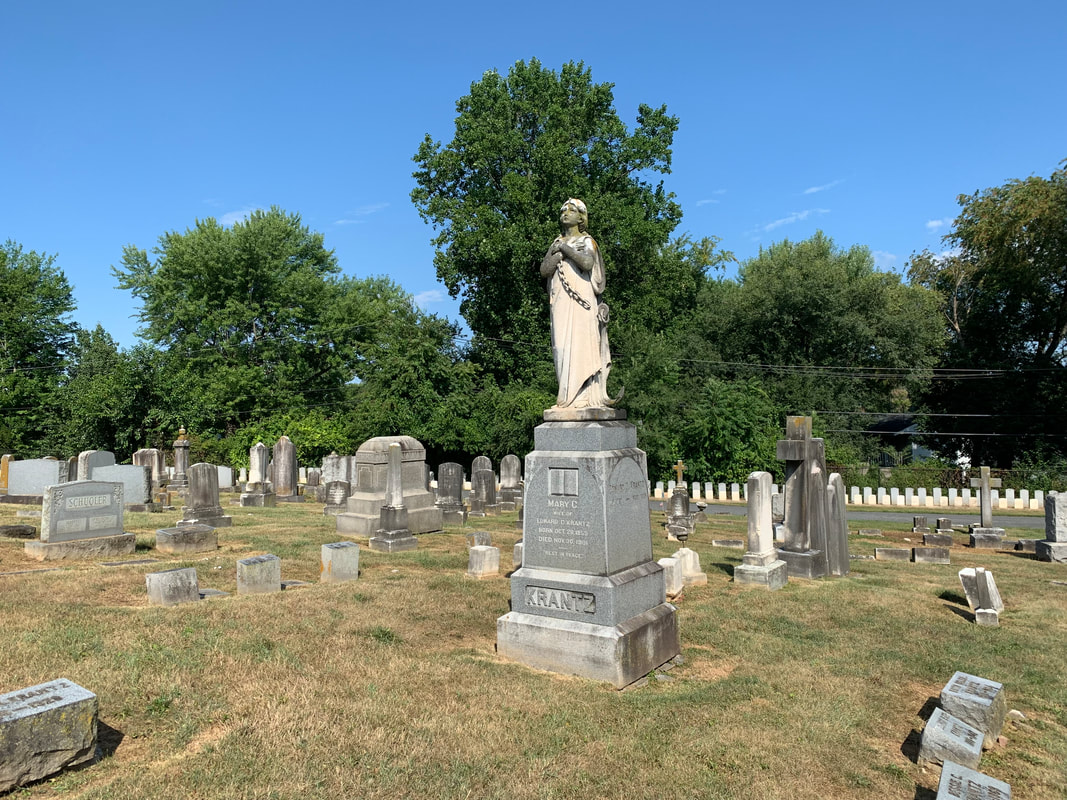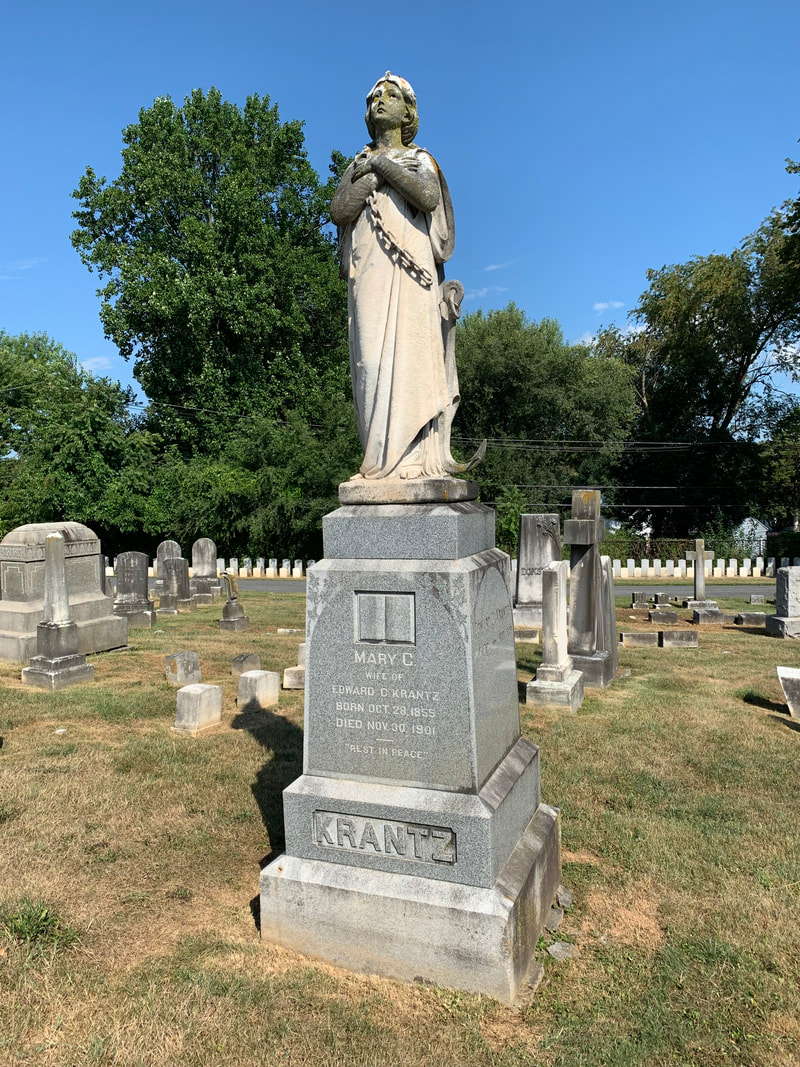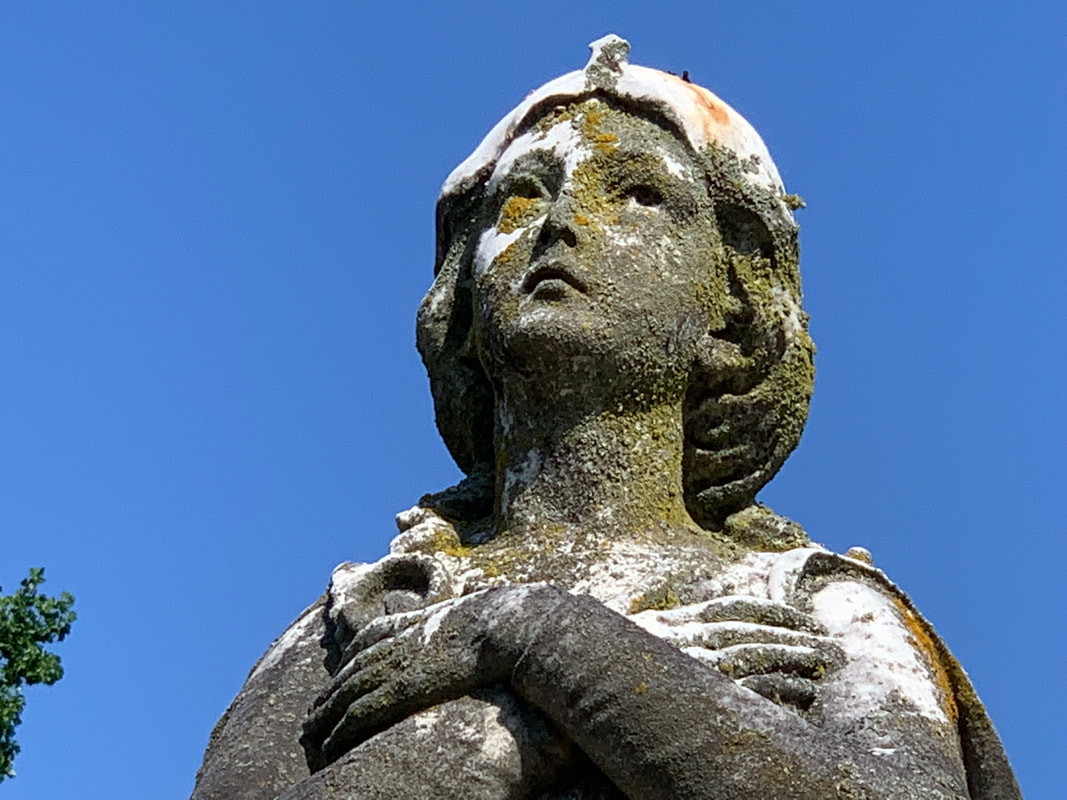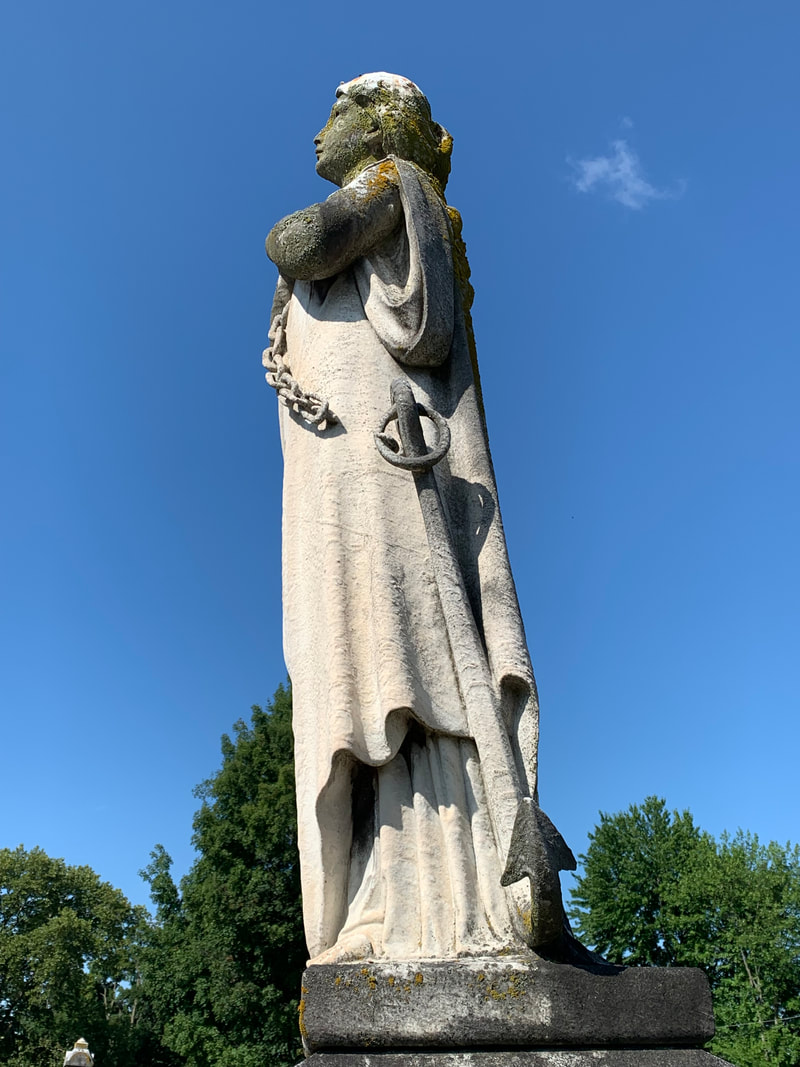Krantz Monument of Hope
Location: Area H/Lot 156
Date of Placement: 1901
Decedents: Mary C. Krantz, Edward D. Krantz, Catharine E. Krantz
Monument inducted into the Hall in August 2022 (Class #2)
Location: Area H/Lot 156
Date of Placement: 1901
Decedents: Mary C. Krantz, Edward D. Krantz, Catharine E. Krantz
Monument inducted into the Hall in August 2022 (Class #2)
A picturesque scene can be found in Mount Olivet’s Area G. Standing high above all surrounding others is the funerary monument of Edward C. and Mary Catherine Krantz. The towering gravestone was erected in the waning years of the Victorian Era (1832-1903) and displays the high ornamentation that characterized that time period. The era was an eclectic period in the decorative arts with several styles—Gothic, Tudor, Neoclassical—vying for dominance. This was true in architecture, furniture, and, of greatest interest here, the funerary arts. In cemeteries, gravestones became taller, embellished and sentimental.
This particular grave monument on Lot 156 features a shrouded woman with arms folded across her chest, gazing upwards toward the heavens in what appears to be prayer and contemplation. The white marble statue sits atop a polished, granite base. Altogether, the work stands roughly 10 feet in height.
This particular grave monument on Lot 156 features a shrouded woman with arms folded across her chest, gazing upwards toward the heavens in what appears to be prayer and contemplation. The white marble statue sits atop a polished, granite base. Altogether, the work stands roughly 10 feet in height.
The monument itself is a paean to Victorian design—possessing an air of triumph, symbolism and sentimentality. Upon closer inspection, one will notice that the woman has a chain draped around her neck which extends down and across her chest to an upright anchor at her side. One of the anchor’s spades is partially concealed under the rear of her robe. Look carefully and you will see that the chain is actually depicted as being broken at the point it reaches the eye-hole atop the anchor.




